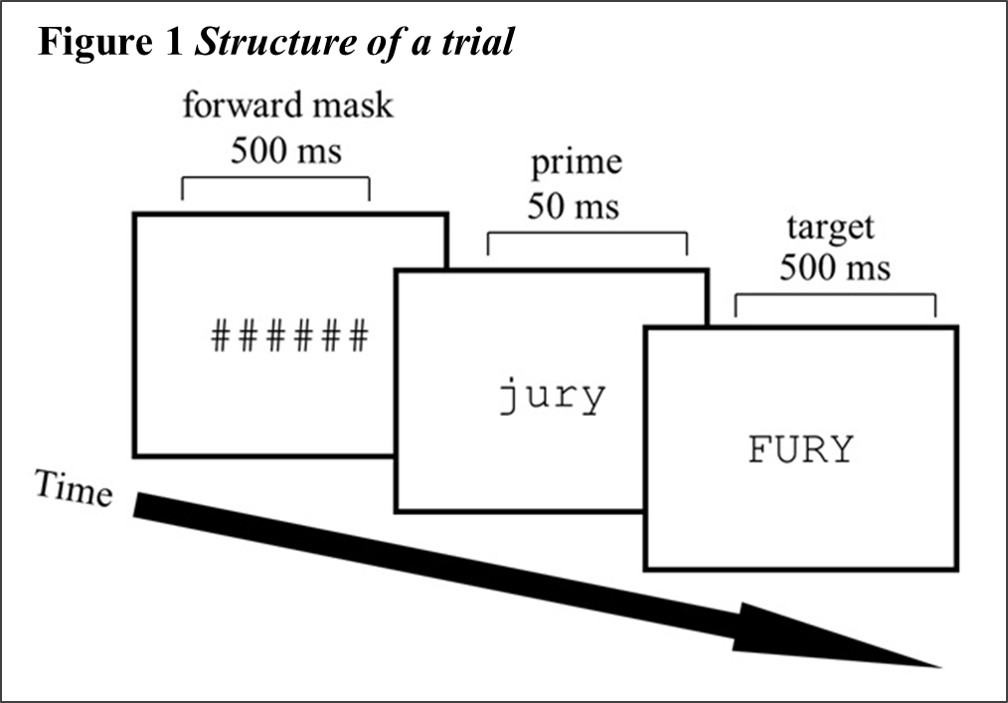When I'm not studying spoken word recognition, I am often using the visual masked priming paradigm (Forster and Davis, 1984) with lexical decision to explore the processes underlying visual word recognition. In a typical trial of a visual masked priming experiment, participants will see a forward mask consisting of row of hashtags (e.g. for 500 ms), then the prime will display briefly (e.g. 50 ms), then the target will appear (e.g. 500 ms) (Figure 1), and the participants' task is to perform some judgment to the target (e.g. judge whether it is a word). Variants of this paradigm include presenting an intervenor between the prime and the target, which, like the prime, is displayed only briefly (Forster, 2013).
Typically, participants are not consciously aware of the existence of the prime (as in auditory masked priming, some awareness of repetition primes may occur), but they process it anyway, and we know this because their response to the target changes depending on the relationship between the prime and the target. We "mask" the prime by doing four things:
- Displaying the prime for only a brief duration (e.g. 50 ms).
- Presenting the prime immediately between the forward mask and the target (or an intervenor or backward mask). In this sense, the target serves as a backward mask which further obscures the prime.
- Displaying the prime in lowercase font and the target in uppercase font. If the test language does not use different cases, as is the case in Hebrew, then the prime can be presented in a smaller font size than the target to achieve the same effect (Frost et al., 1997).
- Presenting all components of a trial in a monospaced font, such as Courier New.
